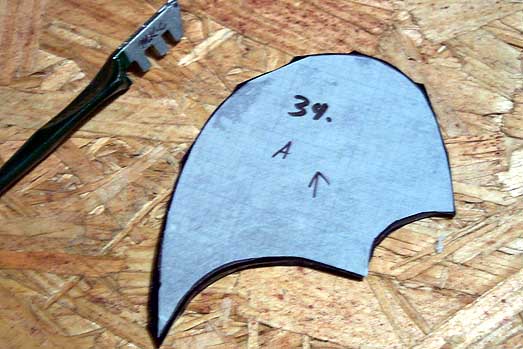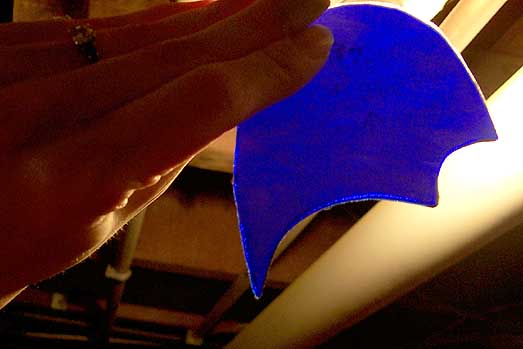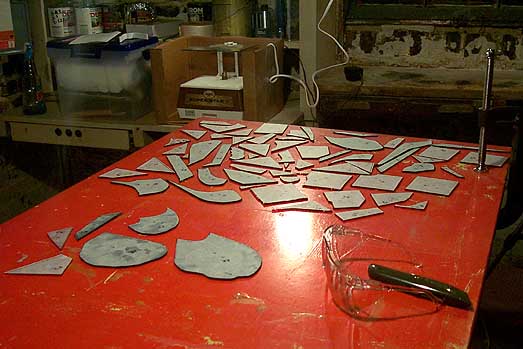 |
 |
 |
|
I'm learning the art (or is it a craft?) of stained glass. At this weblog, I record progress, note useful links, and document flesh wounds. Links
The Art League
Weisser Glass Studio
Virginia Stained Glass Co.
Warner-Crivellaro
Glass Galleries Links List
The StoreFinder: Stained Glass Store Front
ArtGlassArt.com Tutorials
rec.crafts.glass
Nancy's Beginner Tips and Tricks
Splinter Removal Tips
Syndicate this site
Archives
By Date
November 2006 October 2006 May 2006 June 2004 October 2003 September 2003 August 2003 June 2003 May 2003 April 2003 March 2003 February 2003 January 2003 December 2002 November 2002 October 2002 September 2002 By Project Beaded Unity Candle Crocus Panel Dogwood Windows Green Tiered Lamp Lilypads/Lotus Panel Transoms Xmas Ornament |
 |
October 17, 2002: Slave to the Grind
My pretty new grinder isn't so pretty or new any more.
Remember that big piece with the pointy-cut convex edge? 
I had at it with the grinder tonight... 
... and now its edge is nicely un-pointy. 
Issues with the grinder:
Bonus photo: all 69 cut pieces. 6 ground, 63 to go. 
Posted by Michelle on October 17, 2002 10:39 PM Comments
Have you considered the industrial/laboratory line of Sharpies? You might like them; they're dangerous. The happy little "non-toxic" alerts are replaced with "DO NOT INGEST" warnings. Posted by: Pete on October 20, 2002 12:50 AMLike different ones from standard art- or office-supply Sharpies? "Dangerous" is the magic word... Posted by: Michelle on October 20, 2002 05:52 PMYes, different. I've got one in front of me now. "Sanford Sharpie Industrial Super Permanent Ink." Same grey body/black cap, but most of the writing on the body is red instead of the black on the more pedestrian Sharpies. -Specially formulated for industrial, laboratory and commercial use Super permanent. r0x0r. Thanks, Pete. Posted by: Michelle on October 21, 2002 09:22 AMComments are closed. Contact me via the email address at the bottom of the blog pages.
|
| Copyright © 2002-06 Michelle Kinsey Bruns. E-mail me at my first name at this domain. (Take that, spam spiders!)
|
||